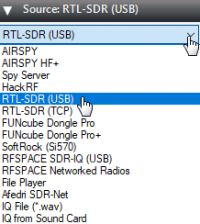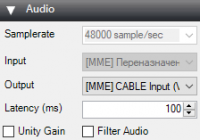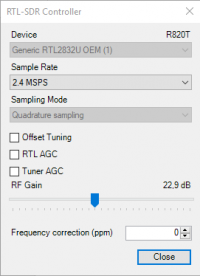Telegraph code receipt
The telegraph code transmission (or, simply, Morse code transmission) is still used by many small units to transmit a beacon signal. A beacon represents a periodically transmitted signal (most often provided once a minute or so) which contains the name of a spacecraft unit (call sign) and the most important telemetry - voltage of the on-board power supply source, state of the batteries and solar panels, temperature of various points of the spacecraft unit, etc. Receipt of these signals can help users to solve the following tasks:
- to enable receipt of the signal “by ear”. Unlike digital signals, which are audible as hissing or buzzing, these signals have a well-recognized, “live” character. The simple fact of receipt usually makes a strong impact; since only the simplest means are applied for transfer, we can evidence receipt of telegraph signals which is primarily used when testing the equipment and when first trying to apply it;
- to demonstrate the Doppler effect. The tone of a signal arising due to changes in the relative speed of the unit registered in the process of changes taking place in receipt in the scale which is enough that it can be heard even without a musical talent. This is one of the few available experiments in which the Doppler effect is observed directly for electromagnetic waves;
- element of the non-numbered list - demonstrate appearance of the unit from behind the horizon, as well as changes in the signal strength when it passes over the station; demonstrate correspondence of time actual for these phenomena with time calculated on the basis of orbital data, provided using special software.
The following software is used to receive the telegraphic code (also called CW - Continuous wave):
- SDR# software for radio signal receipt;
- Orbitron for satellite tracking and Doppler effect control;
Launch the SDR# software and select the radio receiver type: RTL-SDR connected via USB.
Set the switch to the USB mode and set the bandwidth to 5000 under the “Radio” inscription.
Make sure that the “Filter Audio” point is unchecked.
Further you need to increase the signal amplification. To do this, click on the gear icon.
Move the slider so that the noise level increases by about 10 dB.
Launch Orbitron and update TLE firstly. Click the button with a tools indication.
Click on the lightning button to update TLE.
Click on the “Load TLE” button.
Download the amateur.txt list.
Only satellites transmitting the telegraph code will show up in the side list provided on the right. Select the following satellites.
All selected satellites will be shown in the main software window.
Proceed to the “Calculation” tab and click the “Calculation” button.
The satellites' overflight times will be calculated automatically. Go to the “Rotor/Radio” tab and make sure the tracking button is pressed.
The box with indication of the receipt frequency (Dnlink/MHz) must be set to the next correct frequency, reduced by 3 kHz so that the signal is centered in the band:
- CUBESAT XI-IV (CO-57) 436,8475
- CUTE-1 (CO-55) 436,8375
- CUTE-1.7 (CO-65) 437,275
- MOZHAYETS 4 (RS-22) 432.098
- XW-2A 145.640
- XW-2B 145.705
- XW-2C 145.770
- XW-2D 145.835
- XW-2F 145.955












